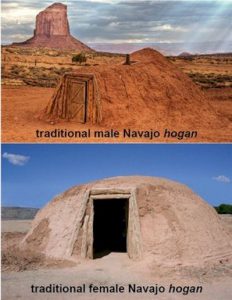They call themselves the Diné
With over 300,000 persons claiming Diné heritage, they are the second largest Native American tribe in the United States. Dené is the name they call themselves. It means the people. Their Hopi neighbors called them the Navajo, which means many farmers. The Spanish started using this name, and so like many other Native American tribes, they became known by the name others called them.
It might surprise many non-Diné to learn that the ancestors of this enormous tribe originated in the sub-arctic region of Canada. Like the Apaches, they are Athabaskans. At some time in the past, all the Athabaskans were one ethnic group. Now they can be found in New Mexico, Arizona, Chihuahua, northern California, Oregon, Washington, British Columbia, Alberta, Saskatchewan, Alaska, Yukon, Nunavut and the Northwest Territories. Some of the branches in Canada, near the Great Slave Lake, also call themselves Diné; so the era when the Navajos and the Apaches left the frigid lands of northern Canada must not be too distant in the past.
Archaeologists believe that the first ancestors of the Navajos and Apache’s entered the Southwest after the year 1000 AD. Many more arrived in the region during the 1200s. Navajo traditions still remember those migrations.
Apparently (from their Hopi name) the Diné at some point in time were primarily farmers. However, by the 1600s when the Spanish arrived in the region, the Navajos primarily hunted, and then traded their preserved meats to the pueblo-dwelling tribes for farm produce. The Navajo resisted Spanish domination, but quickly adapted sheep & goat raising practices from the Spanish. They learned to weave beautiful baskets, but unfortunately the sheep accelerated the desertification of the region. Today, sheep are primarily raised to make wool to weave blankets for the tourist market.
The land of the Diné is now desert and often barren of vegetation. It was not always that way in all places. Native grasses and pine forests once predominated on the landscape of the Navajo lands. The desert terrain today is the result of over cutting of trees by the ancestors of the Pueblo, Zuni and Hopi tribes combined with over-grazing by cattle and sheep during the Spanish Colonial and Western Frontier Periods.
Diné architecture
The traditional Navajo building or hogan was earth sheltered architecture, similar in form to the Mandan earth lodge, but much smaller. A layer of clay, varying in thickness from 6 inches to 3 feet insulated the occupants from extreme heat and cold. The wood components were small in diameter and could include dead limbs. It was architecture appropriate to the realities of desert living.
There were two types of hogans, female and male. Female buildings were homes that were owned by the female occupants. They were originally dome-shaped. Male buildings had tunnel like entrances, which the Navajo called forks. Most male buildings were smaller than female buildings (houses.) The hogans were used for communal purposes and male societies. In pre-Colonial times, the Navajo probably built larger male hogans, similar in scale to Mandan medicine lodges. (See article on Mandan earth lodges.) The Navajo continue to build very small male hogans that are used as sweat lodges.
Erection of a Hogan was accompanied by prayers and spiritual cleansing. The first step was to score a circle or oval in the soil. Four narrow posts were pushed into the ground at a 30-degree angle from the vertical. They were lashed together with horizontal timbers to create a rigid frame. Thin saplings were then stacked against the frame and on top of it. A hole was left in the roof for smoke to escape. The final step was to pack wet clay against the saplings.
The popular image of Navajo houses is that they are 6 or 8 sided with vertical walls. This style of hogan is a little over 100 years old. After the railroads crossed the Navajo Reservation in the late 1800s, deteriorated cross ties would be thrown to the sides of the rails from time to time. During that era, railroad ties were not treated with creosote.
In addition to being handy sources of firewood, the discarded rail ties provided a new way to build hogans. The ties were stacked in order to create six or eight sided hogans. The tops of the hogans were still interwoven saplings. Clay was packed on the top and all sides as the traditional hogan, but the vertical sides of these hogans easily shed their clay stucco in rainy weather, revealing the log cabin-like appearance of the stacked timbers. This modern form of hogan has superior insulating qualities to the traditional hogan because the stacked rail ties are denser and stack tight.
During the late 20th century, Navajos began moving to conventional houses that were financed by tribal or federal grants. Very few hogans are erected these days except as educational exhibits.

